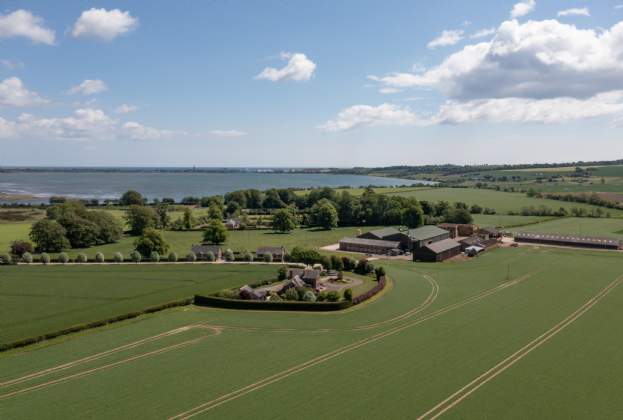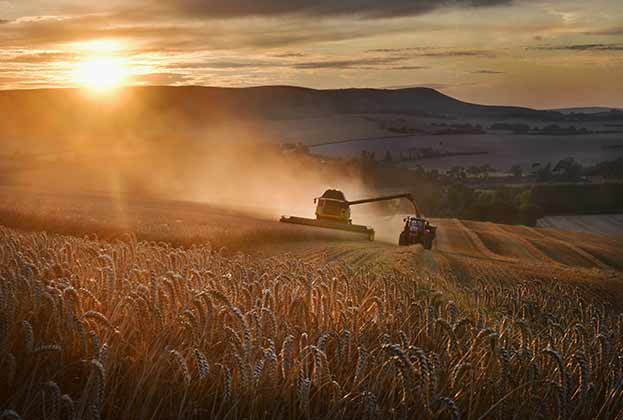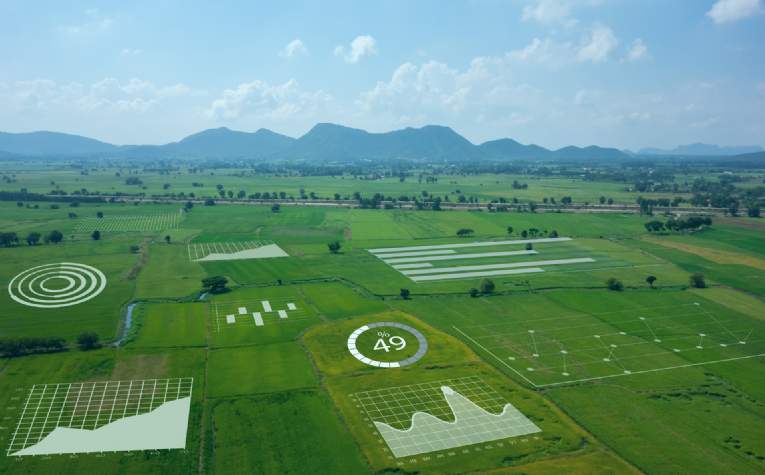The agricultural sector is under increasing scrutiny from the public for its greenhouse gas emissions. For every 10 tonnes of greenhouse gas emissions within the UK, one of them (10 per cent) will be from agriculture. The sector sits in a unique position as both a source and a potential sink of greenhouse gases. While agriculture has reduced its carbon footprint by 13 per cent from 1990 to 2019, it needs to do more, as it risks falling far behind other sectors in the race to decarbonisation.
Using the Savills Model Farm, we have explored how the carbon footprint of a farm might be reduced and how those potential changes would affect the farm’s balance sheet. Four scenarios were run on the farm – an 800-hectare arable farm in the East Midlands – and we used the Farm Carbon Cutting Toolkit to measure the carbon impact of each, as compared with the farm’s existing carbon footprint.
We have previously modelled the impact that land use change can have on a farm’s carbon balance (see Spotlight: Rural Land and Carbon), however this latest research looks into the potential emissions reduction that smaller-scale management alterations can create.
The four scenarios
1. Increase perennial biomass by:
a. Broadening field margin width from 5 metres to 6 metres
b. Increasing hedge width by reducing cutting regime
c. Increasing total hedge length by restocking
2. Include a two-year sown legume fallow across 30 hectares
3. Change to a direct drilling system
4. All of the above
In our modelling, carbon emissions reduction focused on saving fuel and increasing nature-based carbon sequestration through field margins, hedge growth and the adoption of regenerative practices.
There are other land management changes that can be implemented to further reduce carbon emissions, for example reducing the use of fertilizer, changing the type of fertilizer used and using renewable energy across all electric inputs.
Scenario 0 The model farm under usual management has a carbon value of -£20,555. This is the cost to offset the residual 1,009 tonnes of emissions assuming £20.38 per ton. This is the average from the three previous auctions held by the Woodland Carbon Code.
Scenario 1 Shows a net carbon change of -61.7 tCO2e. This is due to saving fuel costs from a reduced hedge cutting regime, which in turn allows the hedges to widen and sequester more CO2e. Saving money comes from reduced diesel consumption; increasing margin width has little effect on income from arable production. Overall the net financial position is £750 per annum less that Scenario 0 due to a reduced cropping area leading to less profit.
Scenario 2 A carbon reduction of 286.7 tCO2e. Including a sown legume fallow would increase the Soil Organic Matter (SOM) content of the soil over time, however it does reduce the overall cropping area. Income from countryside stewardship for the sown legume fallow, and the reduced total inputs and fuel from a reduced cropping area lead to a higher net financial position by £3,422 per annum.
Scenario 3 Changing to a direct drill can reduce fuel consumption for establishment costs by 67.3 per cent. This equates to a significant amount of diesel saved across the farm. Direct drilling can also help maintain soil structure and we assume a 0.001 per cent increase in SOM. The financial implications assume a 10 per cent decrease across the farm for the gross margin of each crop which leads to an overall loss of £4,404 in net financial position.
Scenario 4 When all of the above changes are made the farm’s emissions balance is almost halved while the net financial position changes by 0.8 per cent (£2,681). Should there be a carbon tax at £20.38 per ton, this would equate to a saving of £ 9,852 when compared with Scenario 0.
In the baseline virtual farm model (Scenario 0), fuels account for 25 per cent of emissions and inputs account for 28 per cent. When addressing their carbon balance, farmers should therefore tackle this low hanging fruit first – adapting farming practices to use less fuel and inputs.
However, within our models the biggest gain comes from increasing the farm’s sequestration potential, through changes such as growing hedges and margins. Farmers can be tactical about making the most effective changes – it is often the case that reducing emissions also reduces the operational cost of farming.
This research shows that marginal land management techniques can reduce a farm’s carbon footprint significantly. Curbing emissions in the rural sector isn’t just about the large-scale land use change as proposed in national strategies. To steal a well-known tag line, when it comes to reaching net zero, every little helps.
Further information
Contact Johnny Campbell or Molly Biddell
.jpg)
.jpg)
.jpg)



.jpg)
.jpg)
.jpg)
.jpg)
